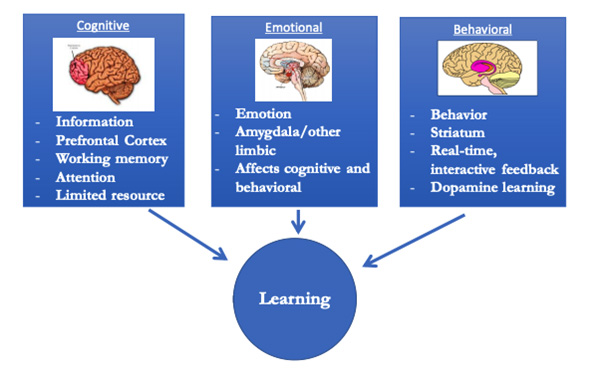 A Guide to Your Business Plan
A Guide to Your Business Plan
So you want to start a new business! Be it online or offline, a business plan is an essential ingredient to the success of your venture. The trouble with most business plans is they are to difficult to understand and appear overwhelming to most small business entrepreneurs. I have made the job easier by providing a format with self explanatory sections for you to follow. It’s a simple business plan with a lot of power when you need to source funding or show clients, among a host of other benefits.
What does my business plan look like?
Executive summary
type of business
company summary
management
product / service, competition
funding, use of funds
financial statement & projections
legal & financial structure
risks & exit
ad hoc swot
1. Background and purpose
1.1. product/service: what is your business? detailed description.
1.2. history: when did you start? how has the business been developing? achievements.
1.3. vision: what do you want to become? what path makes your company better than its competitors?
1.4. mission: the core values of your business. why this business and how you want to shape it?
1.5. milestones:
1.5.1. long term: a way to measure the vision
1.5.2. short-medium term: stages & goals, measurements
1.6. resources required:
1.6.1. critical resources: to back up key success factors
1.6.2. overall resources: to guarantee you can deliver
1.6.3. funding and use of funds: the proposal
2. Objectives
2.1. short term:
– outcomes which can be achieved within one year
– quantitative measurement: efficiency
– example: sales, gross margin, market share
2.2. long term:
– outcomes which require more time to be measured
– can be quantitative and qualitative
– effectiveness will show the sustainability of the business proposal
3. Market and industry analysis
3.1. overall & specific data
3.1.1. type of industry / service
3.1.2. mainstream / niche: market potential, demographics
3.1.3. stage of growth: emerging, growth, maturity
3.1.4. existing similar markets: other regions/countries
3.2. competitive analysis
3.2.1. statement of opportunity: sustainable competitive edge, resource based competitive analysis
3.2.2. review of your competitors strategies
3.3. five forces
3.3.1. bargaining power of buyers
3.3.2. bargaining power of suppliers
3.3.3. threat of relevant substitutes
3.3.4. threats of new entrants (entry barriers)
3.3.5. rivalry among firms (influenced by the other four factors)
3.4. macro & micro factors
3.4.1. global & international: trade agreements, war
3.4.2. national: taxation, regulations, patent protection
3.4.3. local: incentives, infrastructures
3.5. key success factors, a review of your strategic management
4. Production & Operations
4.1. processes & procedures
4.1.1. input, process, output
4.1.2. logistics: store, warehouse, deliveries
4.1.3. equipments, tools, it infrastructure
4.1.4. organization charts: responsibilities, information flows
4.2. thresholds
4.2.1. output capacity: measurement, peaks
4.2.2. stages of output increase: bottlenecks
4.3. resources
4.3.1. technical resources: equipment, software
4.3.2. physical resources: raw material, power supply
4.3.3. human resources: non substitutable for the output
4.4. quality assurance
4.4.1. prototyping, testing, approvals
4.4.2. incoming qc: sampling procedures
4.4.3. outgoing qc: sampling procedures
4.5. customer service
4.5.1. technical support: call center, on-site
4.5.2. warranty: policy, returns
5. Marketing plan
5.1. overall concept & orientation
5.1.1. target customer group(s)
5.1.2. customer awareness
5.1.3. customer satisfaction
5.1.4. customer loyalty
5.2. strategy
5.2.1. price strategy (leadership, differentiation, focus)
5.2.2. distribution strategy
5.2.3. communication strategy
5.2.4. perceived value
5.3. 4 p’s (can be combined with 3.2.)
5.3.1. product
5.3.2. price
5.3.3. place
5.3.4. promotion
5.4. sales forecasts
5.4.1. short term: detailed (month, region…)
5.4.2. long term
5.5. market share
5.5.1. short term
5.5.2. long term
6. Financial plan
6.1. financial projections (1st year monthly, 2nd year quarterly)
6.1.1. p&l (income statement)
6.1.2. cash flow (justify for variations)
6.1.3. balance sheet (yearly)
6.1.4. investments plan
6.2. source & use of funds
6.2.1. present situation (shareholders, loans if any)
6.2.2. requirements (need in working capital + investments)
6.2.3. proposed funding (shareholding, loan, bridge loan)
6.2.4. use of funds (destination & schedule)
7. Human resources
7.1. management team
7.1.1. individual / team (resumes in appendixe)
7.1.2. education, experience, skills & know how
7.2. skilled resources (key personnel)
7.2.1. hired
7.2.2. identified but not yet hired (funding)
7.2.3. to be found (head hunting…)
7.3. unskilled resources
7.3.1. issue about turnover rate (cost…)
7.3.2. issue about continuous hiring (training…)
7.4. packages & salaries
7.4.1. overall policy (market rate, yearly increase…)
7.4.2. incentives (commissions, bonus…)
7.4.3. specific packages (stock options)
7.5. hr strategy
7.5.1. set of values (refer to mission)
7.5.2. internal communication (intranet, group events)
8. Ownership
8.1. legal & financial structure
8.1.1. form of business
8.1.2. shareholding (equity position)
8.1.3. proposed deal structure (if any)
8.1.4. next round of financing (if any)
8.2. Exit strategy
8.2.1. independent growth (self financing)
8.2.2. ipo
8.2.3. bought over / merging
9. Critical risks
9.1. risks factors
9.1.1. categories (what if? and answers)
9.1.2. plan(s) “b” & book value (if any)
9.1.3. most likely scenario
9.2. collaterals (not often advisable)
10. Summary and conclusions
10.1. Wrap up
10.1.1. compelling opportunity
10.1.2. monitoring uncertainty
10.1.3. timing
10.2. Use of funds & return on investment
11. Scheduling and Milestones
11.1. the “calendar of events”
11.1.1. action plan
11.1.2. p.r. plan
11.2. benchmarking
11.2.1. expected outcome
Appendixes can include:
detailed features of the product
pictures (product, production facility)
market statistics
market survey results
detailed sales forecast
advertisement, brochure, cdrom of website content
sample press release
description of equipments, software
resumes
references / recommendations
detailed financial statements
bank statements (if any)
audited accounts (if any)
registry of commerce certificate
All of these should be bound in a separate document.
As you can see the detail is all in the business plan. You can modify the business plan to suit your needs. Remember it is a living document and should be kept up to date and reviewed on a regular basis. If you are just staring out or an existing small business entrepreneur, take the time to build your business plan. It will save you time and money in the long run, and it will provide a solid base to develop your business.











